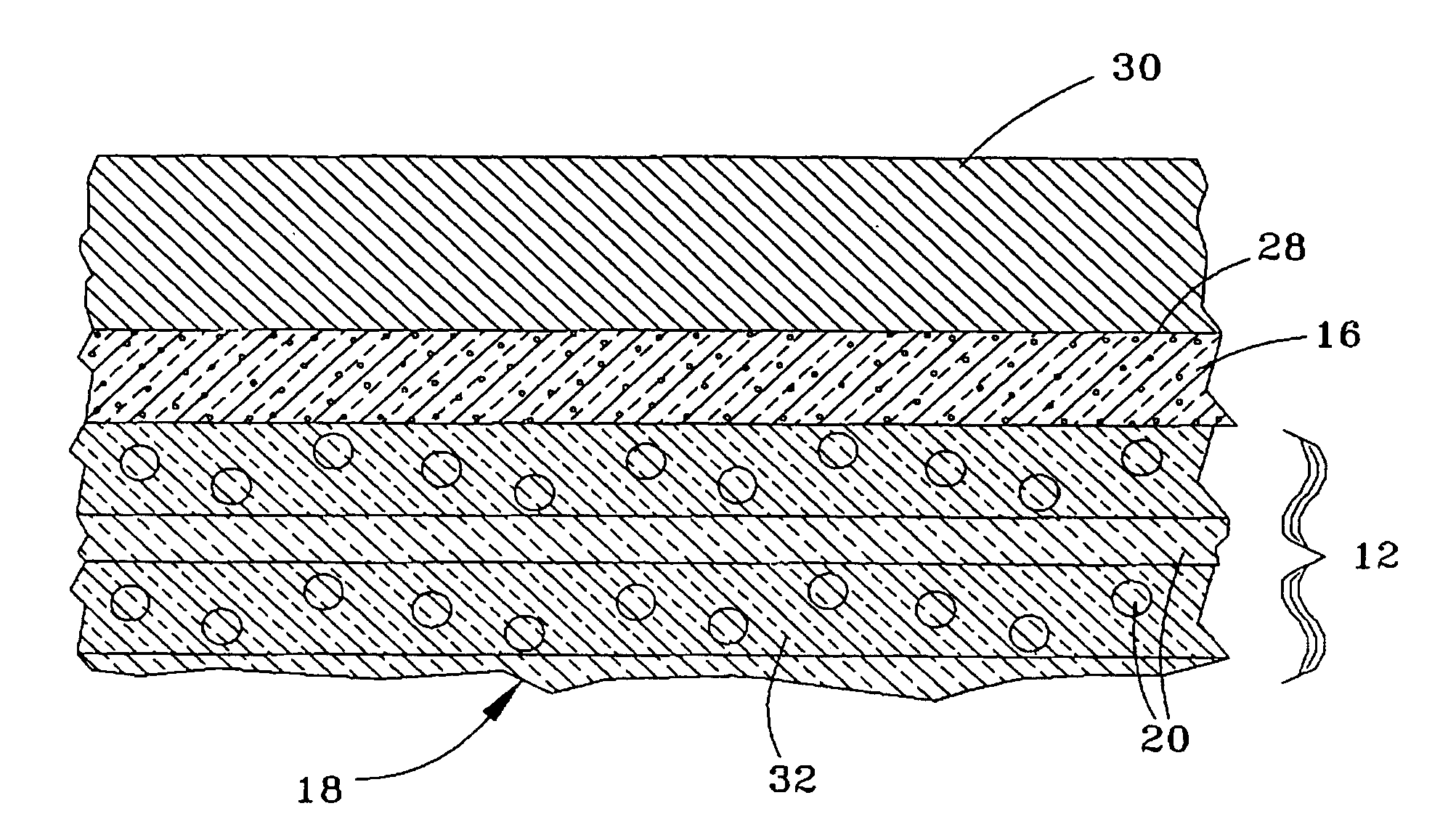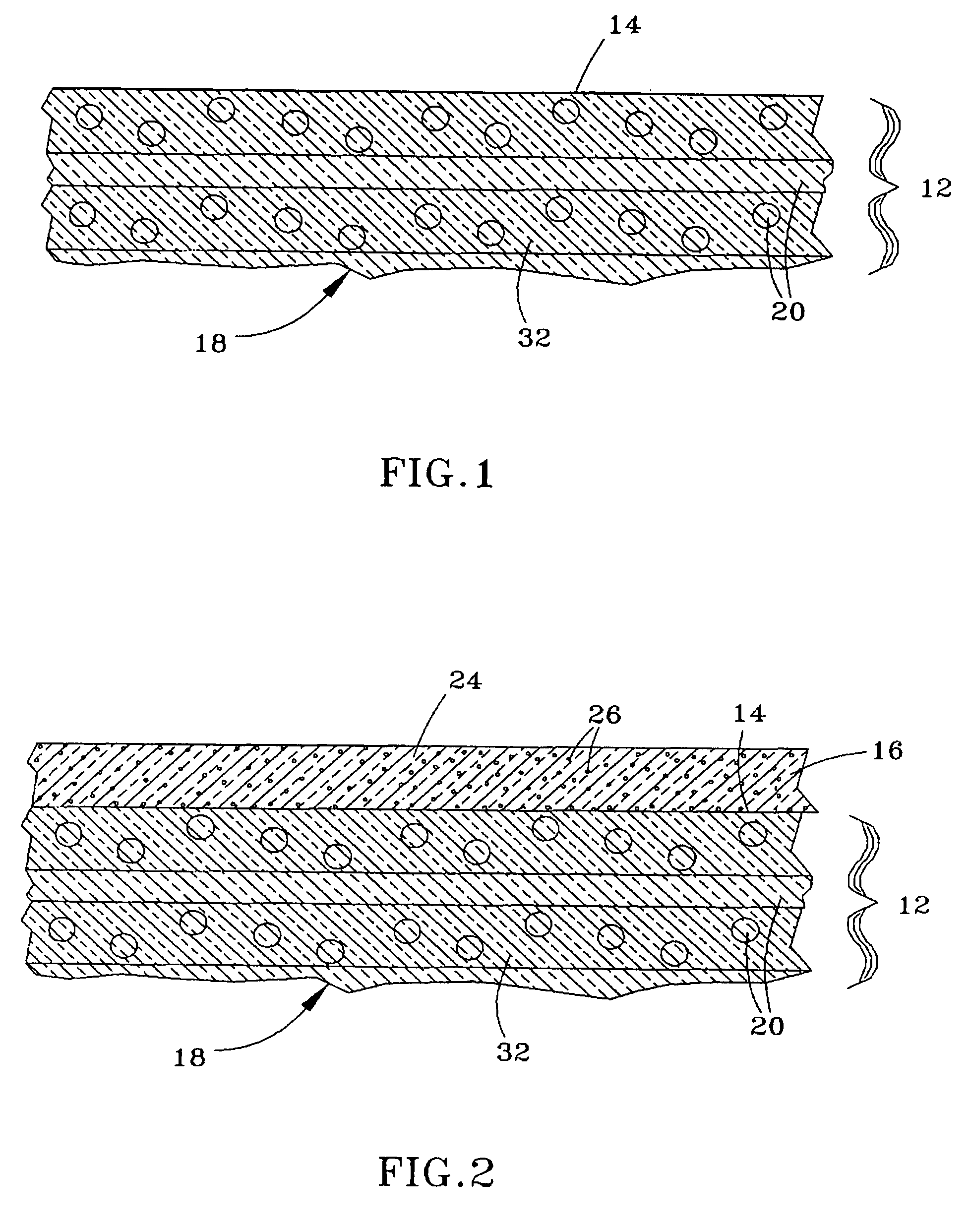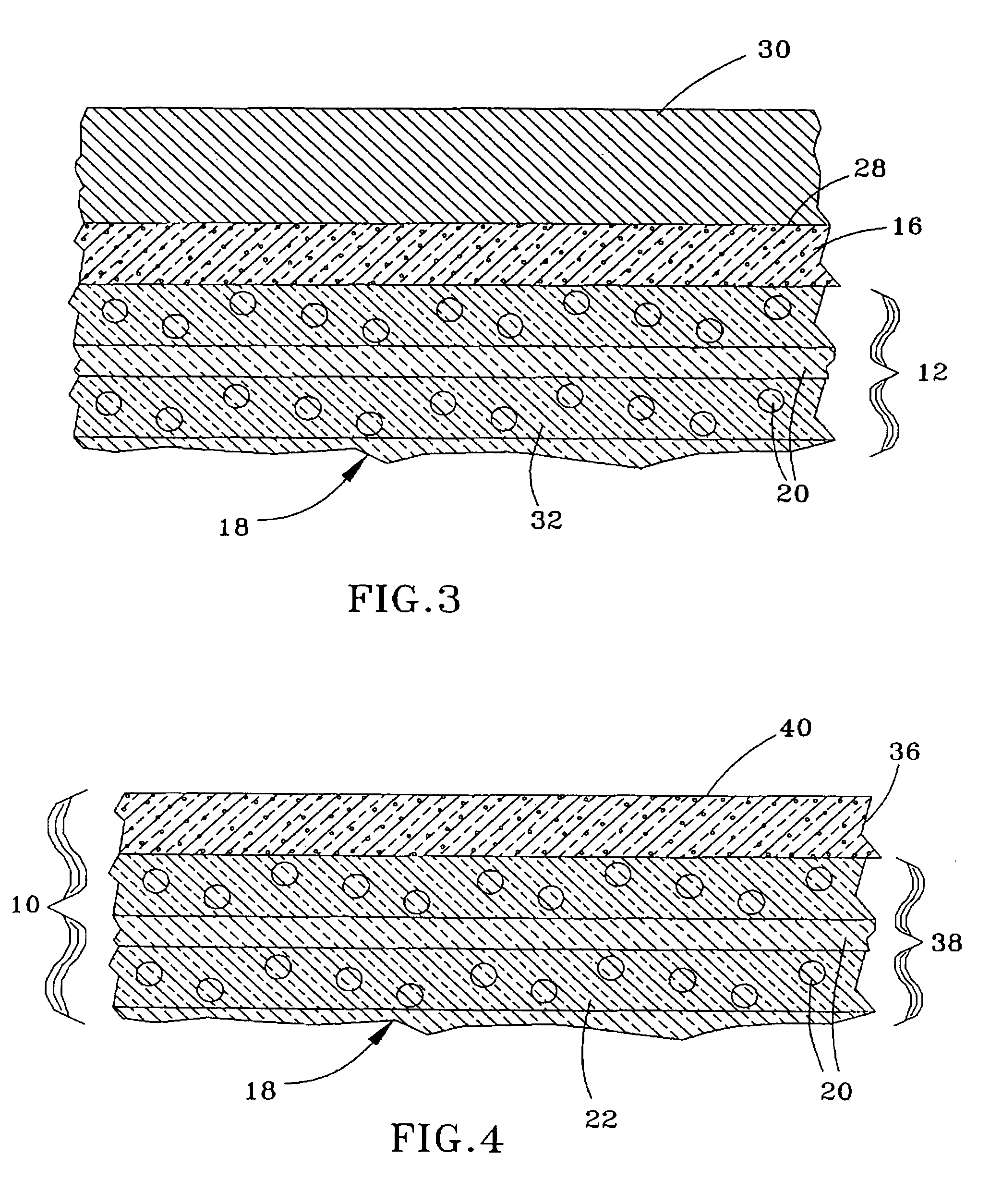Method of producing a ceramic matrix composite article
a ceramic matrix and composite material technology, applied in the direction of coatings, liquid surface applicators, pretreated surfaces, etc., can solve the problems of inability to accurately machine, inability to produce acceptable impression patterns, and difficulty in achieving accurate machine accuracy, so as to promote the adhesion of the coating, the robustness of the coating can be enhanced, and the effect of sufficient robustness
- Summary
- Abstract
- Description
- Claims
- Application Information
AI Technical Summary
Benefits of technology
Problems solved by technology
Method used
Image
Examples
Embodiment Construction
[0015]FIGS. 1 through 4 represent cross-sectional views of a surface portion of a body undergoing processing steps to produce a CMC article 10 (FIG. 4) in accordance with a preferred embodiment of the invention. As a CMC, the article 10 comprises a ceramic matrix 22 reinforced with a ceramic reinforcement fabric 18 made up of individual continuous tows 20 (bundles of continuous fibers). In a preferred embodiment, the reinforcement material 20 and the matrix 22 are formed of or at least comprise silicon carbide (SiC). Also in the preferred embodiment, the matrix 22 is formed by a silicon MI process, such that the matrix 22 further contains some free silicon. As such, the article 10 may be referred to as a SiC / Si—SiC (fiber / matrix) CMC, in accordance with the teachings of commonly-assigned U.S. Pat. Nos. 5,015,540, 5,330,854, 5,336,350, 5,628,938, and 6,024,898 and commonly-assigned U.S. Patent Application Publication No. 2004 / 0067316, whose disclosures relating to compositions and pr...
PUM
| Property | Measurement | Unit |
|---|---|---|
| diameters | aaaaa | aaaaa |
| particle size | aaaaa | aaaaa |
| thickness | aaaaa | aaaaa |
Abstract
Description
Claims
Application Information
 Login to View More
Login to View More - R&D
- Intellectual Property
- Life Sciences
- Materials
- Tech Scout
- Unparalleled Data Quality
- Higher Quality Content
- 60% Fewer Hallucinations
Browse by: Latest US Patents, China's latest patents, Technical Efficacy Thesaurus, Application Domain, Technology Topic, Popular Technical Reports.
© 2025 PatSnap. All rights reserved.Legal|Privacy policy|Modern Slavery Act Transparency Statement|Sitemap|About US| Contact US: help@patsnap.com



